LSD For Sale: Where To Buy LSD | Buy Lsd Blotters In Europe | Buy LSD Blotters Online
Ultimate Guide To the World’s Most Famous Psychedelic
LSD For Sale. Blotters LSD is by far one of the most popular psychedelic drugs in the world — and for good reason. This powerful compound has a tendency of inducing valuable personal insights.
By now, you’ve probably heard about the powerful psychedelic compound known as acid.
It’s famous for being the inspiration behind many of the Beatles’ hit music, driving the counterculture of the 1960s, and for its (attempted) use by the CIA as a mind-control agent in the MK ULTRA project (more on this later).
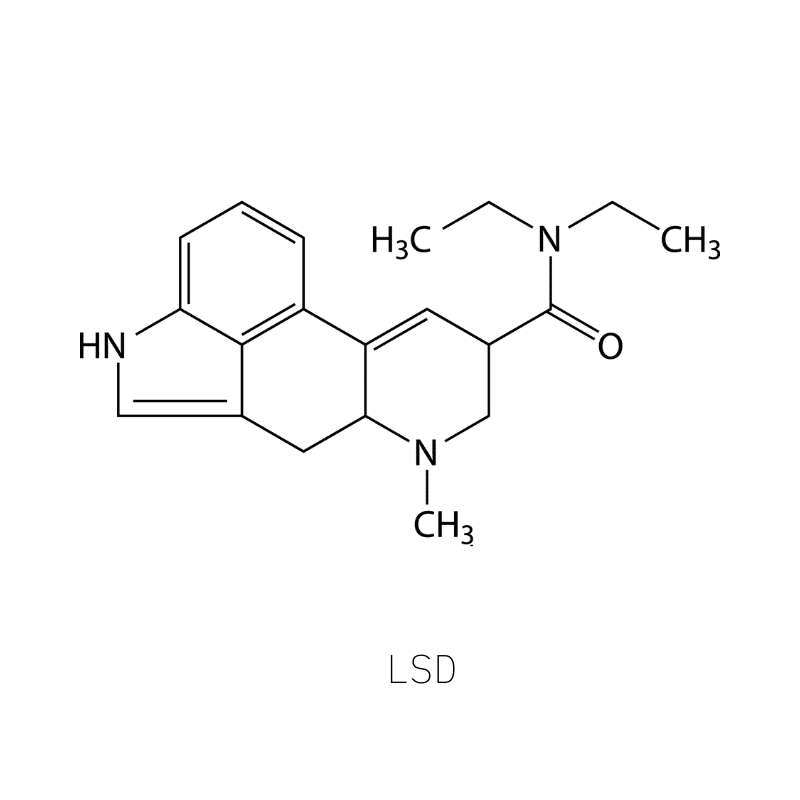
What is LSD?
LSD is a semi-synthetic derivative of a group of compounds called lysergamides. These compounds are primarily found in a species of rye fungus called ergot.
LSD works by activating serotonin receptors in the brain — which produces changes in visual, auditory, and tactile perception. It promotes introspection and dissolving of the “ego”.
An acid trip can last anywhere from 8 to 12 hours.
Conventional uses of acid revolved around self-growth and spiritual exploration — but research has also shown a lot of promise for LSD as a treatment for psychiatric disorders.
It has the ability to “reset” the default mode network — which is a series of brain processes that control our inner sense of self-worth and ego. Hyperactivity in the default mode network has been linked with depression, anxiety, obsessive-compulsive disorder, addiction, and more.
LSD For Sale: Specs & Technical Details
| Active Ingredient | Lysergic acid diethylamide |
| Level of Risk | Low |
| Other Names | Acid, Lucy, Mellow Yellow, California Sunshine |
| Most Common Side Effects | Anxiety & paranoia |
| Duration of Effects | 6 – 10 hours |
| Legality | Illegal in most parts of the world |
Common Names For LSD
LSD has been around for over 60 years now and has accumulated many nicknames over the years.
Here are some of the most prominent names for LSD:
- Acid
- Lucy
- Mellow Yellow
- Window Pane
- California Sunshine
- LAD (the English acronym for lysergic acid diethylamide)
Trip Sitter Safe LSD For Sale Guidelines
Learn the four pillars of responsible psychedelic use — set, setting, sitter, & substance
Know your dose — the common dose for LSD is about 80 μg
Test your substances — always test your LSD with a reagent test kit before you start
Know the timeline — the effects of LSD are going to last between 7 and 12 hours
Have a trip sitter nearby — someone you trust who remains sober throughout the experience
Don’t mix — it isn’t safe to mix LSD with other drugs, medications, or alcohol
Where To Buy LSD? (LSD Dose Calculator)
The most common dose for LSD is about 80 micrograms — which is the average amount of LSD in a standard square of blotter paper (+/- 10%).
Depending on the manufacturer, the dose per blotter square can range from about 20 mcg of LSD to 100 mcg.
The usual dose is to take one blotter square at a time. Some people will take two or even three doses. Only people with a lot of experience using LSD should even consider taking more than one square at a time. It’s easy to underestimate the effects of LSD until it’s too late.
Many people will take one square, and prematurely take another after an hour when the effects aren’t “strong enough”. Sixty minutes later, you’ve got two full doses of LSD. Once you’ve taken the LSD, you can’t un-take it. You’re going to feel the effects no matter what you do — so make sure you don’t take too much.
Microdose
(10 – 25 micrograms)
Any dose below the psychoactive threshold is considered a microdose. This means the dose isn’t strong enough to make you hallucinate.
The threshold for LSD is roughly 50 mcg — so most people will take around half or less of that as a microdose (10 – 25 mcg).
The purpose of microdosing isn’t to “trip.” It’s used as a tool to promote a heightened sense of focus and productivity, boost creativity, and support mental health conditions like depression and anxiety over long periods of time.
The main benefits of microdosing appear gradually over the course of several weeks or months.
There are a few different philosophies on the dosage schedule while microdosing. The most common is the protocol outlined by Dr. James Fadiman — a prominent psychotherapy researcher. He sought to standardize microdosing to make it easier to research.
Dr. Fadiman’s protocol is to take a microdose of LSD every third day for a full month.
You can microdose for longer than this but should never do more than three months at a time before taking an extended break for at least a month.
LSD dosage schedules:
- One day on, two days off
- Five days on, two days off
- One week on, one week off
The Standard Psychoactive Dose
(80 – 200 micrograms)
The average psychoactive dose of LSD is very low — around 80 to 200 micrograms. Even a dose of 20 mcg is enough to produce subtle changes in perception.
The high potency of acid makes measuring the dose difficult. A single drop of acid that’s been diluted for making blotters contains around 70 mcg.
However, a single drop of an undiluted LSD solution could contain as much as 70,000 mcg.
Instead of measuring out drop doses, manufacturers dilute and coat small pieces of paper with LSD and cut them into squares for individual doses. This is referred to as blotter paper.
These paper squares are then placed in the mouth and held there to allow the active ingredient to absorb through the mouth’s mucus membranes.
It’s hard to know what the exact dose is for a single square of blotter acid paper. Factors like how the LSD was stored, whether it was exposed to sunlight or not, and the potency of the acid used to make it can all affect the dose per blotter paper.
You can get a rough gauge on the dose per piece based on its effects. If you or someone else has taken acid cut from the same sheet of blotter paper, you’ll be able to get an idea if it’s on the high-end of the dose (100 mcg LSD) or the lower-end (20 mcg). If you’re not sure, it’s wise to start with just a single piece rather than underestimating the effects and taking too much.
Heroic Dose
(200 – 400 micrograms)
A heroic dose is considered any amount above 200 micrograms. These doses are powerful and produce dramatic shifts in the perception of reality. At this dose, you’re likely to experience dissociative thoughts, loss of ego, visual and auditory hallucinations, and out-of-body experiences.
This dose should never be attempted by anybody who doesn’t already have a lot of experience using LSD or is under the direct supervision of a trained psychotherapist.
While this dose can provide incredible insights and introspective benefits, it also brings a much higher risk of a “bad trip”.
LSD Tolerance
The body forms a tolerance to all tryptamine psychedelics relatively quickly. This includes LSD, DMT, LSA, and psilocybin.
Tolerance means the body becomes resistant to the effects of a drug. You’ll need to take a larger dose the second time you take it to match the intensity of the initial dose.
Tolerance to LSD usually develops after a single dose and can take two weeks to reverse entirely.
If you take a 100 mcg dose of acid today, you’ll need to take roughly 280 mcg tomorrow to experience the same intensity of effects. However, if you wait for about two weeks, you’ll only need to take 100 mcg to get the same effects all over again.
How Does Tolerance Form?
Compounds like LSD push the balance of receptor activity outside normal parameters. More specifically, LSD activates the 5-HT2A receptors in the brain — causing psychoactive effects. The activity of 5-HT2A goes so far outside the normal range; the body automatically makes changes to reduce the effect.
In order to reduce the activation of these receptors, the body will “hide” some of them. The next time you take LSD, fewer receptors are available for it to exert its effect — producing less impact.
Over the course of 10-14 days without the drug, these receptors will become “unhidden,” and LSD has the same level of impact it had the first time all over again.
LSD Tolerance Calculator
Check out this simple LSD tolerance calculator to help you find the approximate dose to overcome the effects of tolerance when using LSD more than once in a two-week window.
*Note, aside from microdosing, it’s recommended that you avoid taking LSD more than once every two weeks.
This calculator is only able to provide an estimate. Please do not be deceived by the apparent precision of the numbers. For the best experience, let 2 weeks pass between each trip, tolerance should be back to normal after 14 days.
What Does LSD Feel Like?
Every LSD experience is unique. The effects of the drug feed off your own thoughts and imagination, so the direction a particular trip can take depends on how you’re feeling, the stimuli in your environment, and the people you’re with.
In general, the effects of LSD are usually positive. While it’s possible to have a negative experience (aka, a bad trip), the right preparation (positive mindset, comfortable setting, and a trip sitter) can dramatically reduce the chances of this happening.
Most people report introspection, laughter, and creative insight while taking LSD.
Many of these experiences resonate with people for years after the experience — such as realizing the importance of some of your personal relationships, recognizing toxic thought patterns, and more.
LSD can produce the following feelings:
- Euphoria
- Increased sense of empathy
- More mental energy
- A strong sense of awe & wonder
- Visual and auditory hallucinations
- Altered perception of time (time feels faster or slower than normal)
- Giddiness and laughter
Not all of the effects of LSD are positive. It’s important to be aware of the negative effects that can arise periodically throughout the trip. If these feelings appear, it’s important to remember that they’re only temporary. As soon as you stop focusing on them, they tend to disappear. Resisting these feelings only makes them worse.
Having a trusted guide with you during your trip — especially if using higher doses — is the most effective way to avoid or dissolve negative feelings during the trip.
Some of the more negative feelings that can arise include:
- Confusion and frustration performing routine tasks
- Feelings of fear or anxiety
- A heightened level of suspicion about others (paranoia)
- Seeing or hearing things that aren’t there
- Feelings of being overwhelmed
How LSD Feels According to Dose
- <20 mcg — sub-psychedelic dose, produces a heightened level of awareness and creativity
- 20 – 60 mcg — threshold experience, produces changes in visual & auditory perception
- 60 – 120 mcg — substantial experience, produces strong hallucinations, introspection, & dampening of the DMN
- 120 – 300 mcg — profound experience, effects at this dose are very strong and often lead to life-changing experiences
- >300 mcg — out of body experience, temporary loss of touch with reality, similar to DMT experience
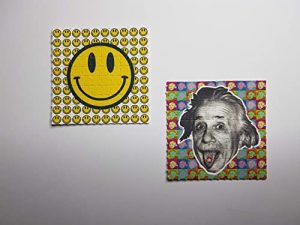
LSD Trip Timeline: When Does it Start? How Long Does it Last?
Acid takes around 30 to 60 minutes before it starts to kick in. If you hold the blotter paper under your tongue, it may be even faster.
Acid is one of the longest-lasting psychedelics — in some cases providing psychoactive effects for up to 12 hours. The average duration is closer to 7 hours before you’re about 95% back to normal. Residual effects can linger for several more hours, involving feelings of introspection and mild visual distortions.
Here’s what a typical timeline for an acid trip looks like:
T0: The Initial Dose
This is when you first take LSD — marking the start of the journey.
T30: Onset Of Effects
Mild effects may start to appear, starting with a tingling sensation in the stomach. By T60, you’ll begin to see some visual perception changes (objects appear to be moving or vibrating). This is usually accompanied by laughter and giddiness.
T120: Peak Effects
Two hours in, the effects will be blatantly obvious. You may feel euphoric, giggly, and introspective. You’ll be experiencing both visual and auditory hallucinations at this time.
The effects of the drug can be quite intense around this time. This is the period where the heavier side of acid happens. You may experience dissociative thoughts, ego death, and in some cases, out-of-body experiences.
This is the most critical stage to have a trip sitter nearby to help you through any challenging experiences. The hallucinations and dissolving of the ego can cause paranoia, anxiety, and fear. Taking steps before taking LSD — such as finding a trusted trip sitter and finding an environment that’s comfortable and safe — is the best way to avoid problems during the peak effects.
T240: The Slow Downhill Fade
Around the four-hour mark, your trip will have already reached a climax and will start to decline.
You’ll go through periods of high intensity, followed by periods of lower intensity. This waxes and wanes over the next three hours, each time reaching a lower “peak” at the top of the wave.
T360: The Comedown
By hour six, the effects will be dramatically reduced. Some people find they’re back to normal by this time; others may still be experiencing residual effects from the drug.
This period remains full of introspective thoughts as you replay the experience you just went through. Many people feel very relaxed at this point and usually end up in a comfortable position lying or sitting down as you ponder the experience you just went through.
You’ll feel lazy and relaxed — but not tired. This is a great time to journal or talk about your experience with the rest of your group.
T600: The End of the Trip
This is the 10-hour mark. The majority of people will be completely back to normal at this point. Most people will start to feel sleepy by this point as the brain seeks the opportunity to recharge.
You’ve spent the past 10 hours exploring, moving around, and thinking at a high level.
This is a good time to get some rest and get a fresh start tomorrow.
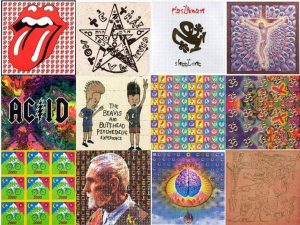
Is LSD Legal?
LSD is illegal in most parts of the world. It’s listed as a Schedule I drug on the UN Convention on Psychotropic Substances (1971). This means all countries taking part in this convention are expected to include LSD on their prohibited substances list.
There are currently no countries where LSD is considered legal — however, there’s a growing list of countries, states, and municipalities that have moved to decriminalize LSD.
Decriminalization doesn’t make a substance legal — it just removes the penalties for being in possession of personal amounts of the drug.
Is LSD Safe?
There are over 60 years of research to prove LSD is both non-toxic and non-addictive. There have never been any reported overdose cases from people taking too much LSD, and there’s no indication of addiction to LSD.
Tolerance formation is possible in people who take LSD often — prompting them to take larger doses to get the same effect. However, when they stop taking LSD, no symptoms of withdrawal or cravings are reported.
The best way to assess the toxicity of a drug is to find the LD50. This is a term used in medical research that describes the amount of a drug needed to kill roughly 50% of the study participants (usually mice).
There has yet to be an established LD50 for LSD. Even exceptionally high doses of the drug are non-lethal.
In the 1970s, a group of party attendees mistakenly snorted between 1000 and 7000 micrograms of LSD in powder form after mistaking it for cocaine [4]. This is equivalent to taking roughly 100 doses of acid at once. Some of the people in this group experienced problems with bleeding in the digestive tract, vomiting, and temporary comatose states. Everybody in this group survived the incident unharmed.
Despite the high level of safety, there are some potential risks to using LSD. During the trip, visions and hallucinations can cause bouts of anxiety, paranoia, and intense fear —some of which can cause long-term mental harm.
Another long-term (albeit rare) side effect that can result from LSD use is a condition called hallucinogen persisting perception disorder (HPPD). This disorder is characterized by long-lasting changes to visual or auditory sensory information — sometimes lasting several months or years after the initial trip.
Side Effects of LSD
There are two different categories of side effects from LSD — physical side effects (changes in body metrics like temperature or heart rate) and psychological side effects (changes in perception, mood, and mental condition).
Physical Side Effects of LSD
- Sweating
- Rapid heart rate
- High blood pressure
- Dehydration
- Increased body temperature
Psychological Side Effects of LSD
- Paranoia
- Sense of fear or phobia
- Panic and anxiety
- Synesthesia (“hearing sounds”)
- Hallucinations
- Mental dissociation
How Strong is LSD Compared To Other Psychedelics?
LSD is considered moderate in terms of strength. It produces much less psychoactivity than a drug like DMT or salvia and more psychoactivity than others like mescaline or marijuana.
LSD is most comparable in terms of effects to magic mushrooms.
You’re unlikely to experience out-of-body experiences on LSD unless you take exceptionally high doses (not recommended).
LSD vs. Magic Mushrooms
LSD is very comparable to magic mushrooms in terms of effects. Both LSD and the active ingredient in magic mushrooms (psilocybin) share a very similar structure and interact with the same receptors in the body.
The difference in these two compounds is subtle — mushrooms tend to have a stronger “body high” and have a shorter duration of effects (about 4 – 6 hours). LSD is more “mental”, producing striking changes in visual and auditory sensory perception.
The psychoactive dose is similar for both compounds — starting at around 20 mcg of pure LSD or pure psilocybin.
LSD vs. DMT
LSD and DMT (dimethyltryptamine) target the same receptors in the brain. Low doses of DMT share many similarities with LSD, and very high doses of LSD are similar to DMT.
DMT has a much higher chance of producing out-of-body or transcendental experiences — stripping away the ego and forcing introspection.
LSD Vs. Mescaline
Mescaline is a psychoactive alkaloid produced in several species of cacti, including peyote and San Pedro. The effects of this compound are very similar to LSD, but with a few distinct differences.
Mescaline also produces a unique geometricization effect — causing 3-dimensional objects to appear flat and distorted.
LSD vs. LSA
LSA stands for d-lysergic acid amide — it’s often referred to as ergine. Both LSD and LSA are similar in terms of effects and chemical structure.
Both compounds are classified as ergoline alkaloids (alkaloids extracted or derived from the ergot fungus). LSA is naturally-occurring and can be found in plants and fungi such as ololiuhqui, Hawaiian baby Woodrose (Argyreia nervosa), sleepy grass (Achnatherum robustum), and morning glory seeds (Ipomoea violacea). LSD is a synthetic version derived from other alkaloids in the ergot fungus.
LSA is different from LSD in that it’s also a sedative and produces a much milder trip overall compared to LSD. It produces a feeling described as being heavy.
How LSD Works
The chemical structure of LSD is similar to serotonin — which is one of the most influential neurotransmitters in the brain. Serotonin is responsible for regulating mental processes such as mood, arousal, eating habits, digestion, and much more.
The similarities in structure allow LSD to interact with the serotonin receptors [5,8]. In particular, LSD targets 5-HT2A and 5-HT2C receptors. These receptors are responsible for the psychoactive effects of LSD and other tryptamine-based psychedelics (such as DMT or psilocybin).
LSD is different from other psychedelics in that it can also activate the dopamine D2 receptors.
The History of LSD
LSD was first invented in 1938 by a famous Swiss chemist named Albert Hofmann. He was also the same man to isolate psilocybin and psilocin from magic mushrooms for the first time.
Hoffmann discovered acid by accident while working for the pharmaceutical company, Sandoz. He was searching for a new drug to help with uterine contractions during pregnancy.
LSD, as we know it today, was the 25th compound he synthesized from compounds he extracted from a rye fungus called ergot. His notes listed the compound as LSD-25 — which remains a common name for the drug to this day.
After inventing LSD-25, it was quickly ruled out for having no impact on affecting uterine contractions, so it was shelved for about five years.
In 1943, Hoffmann returned to ergot and resynthesized LSD-25 and other compounds to perform some experiments.
Somehow or another, a few drops of LSD-25 ended up on his skin. About an hour later, he started to experience a “not unpleasant intoxicated like condition, characterized by an extremely stimulated imagination.”
After this experience, Hoffman became understandably interested in LSD-25 and dedicated the subsequent several years towards further testing the compound for potential medical applications and toxicity. The first clinical trials for the new drug began in 1947 in a psychiatric hospital in Basel, Switzerland.
LSD Counterculture
In the 1960s, LSD managed to escape the laboratory and became accessible by the mainstream public. Sandoz (the owner of the drug at the time) was sending large quantities of the drug to virtually any researcher interested in testing it. Professors Timothy Leary and Richard Alpert at Harvard University were two of the primary recipients of this deal in the United States.
Leary and Alpert explored the effects of the drug under different conditions on students. Many times both Leary and Alpert were under the influence of the drug themselves while conducting the study. This, along with the notion that Leary and Alpert pressured students to take LSD, lead to their dismissal from the university in 1963.
Alpert traveled to India to learn Hinduism. He later wrote several “seminal” books on the subject of spirituality under the pseudonym Baba Ram Dass.
Leary went on to publicly promote the use of psychedelics and became a leader in the counterculture of the 1960s. He’s famous for several catchphrases of the time — “turn on, tune in, drop out,” “set and setting,” and “think for yourself and question authority.” He was once described as the “most dangerous man in America” by then-president Richard Nixon.
The LSD Prohibition
A man named Dr. Sidney Cohen lead the push for a prohibition against LSD and psychedelics. He conducted various studies throughout the 1960s and lobbied the government to introduce laws to prohibit the use of hallucinogenic drugs. He argued that in the wrong hands, LSD could become dangerous.
During this time, the media reported stories about people jumping out of windows while under the influence of LSD, starring into the sun until going blind, and other fantastic (and unfounded) stories aiming to demonize the drug.
It worked.
In 1968, the US federal government banned the possession of LSD, and later moved it into the official schedule I restricted drug status in 1970.
Research on LSD came to a screeching halt and didn’t start to pick up again until the 1980s. After its prohibition, it became very difficult for research programs to gain access to the compound for further studies. Only a handful of universities retained access to psychedelics during this time.
The New Age In LSD & Psychedelics
We’re currently entering a new wave of psychedelic research. Laws are loosening around the world, and the pile of evidence supporting the therapeutic value and high level of safety for psychedelics like LSD is becoming impossible to ignore.
There’s a push towards bringing LSD back into the health system in the form of psychedelic-assisted psychotherapy.
Places like British Colombia, Canada, Oregon, USA, Mexico, and several US municipalities have either legalized or decriminalized the use of psychedelics.
What the Future of LSD Looks Like
LSD is currently illegal throughout most of the world (with a few exceptions). As public interest in psychedelics continues to grow and develop, laws and regulations around this non-toxic substance are starting to open up.
Over the past few years, there’s been a lot of exciting research on the use of this psychotropic compound for treating addiction, anxiety, and depression. There’s also a lot of interesting research currently in the works exploring the role of LSD on resetting the default mode network (DMN).
This is a rapidly developing space. Stay up to date by signing up for our monthly newsletter below.

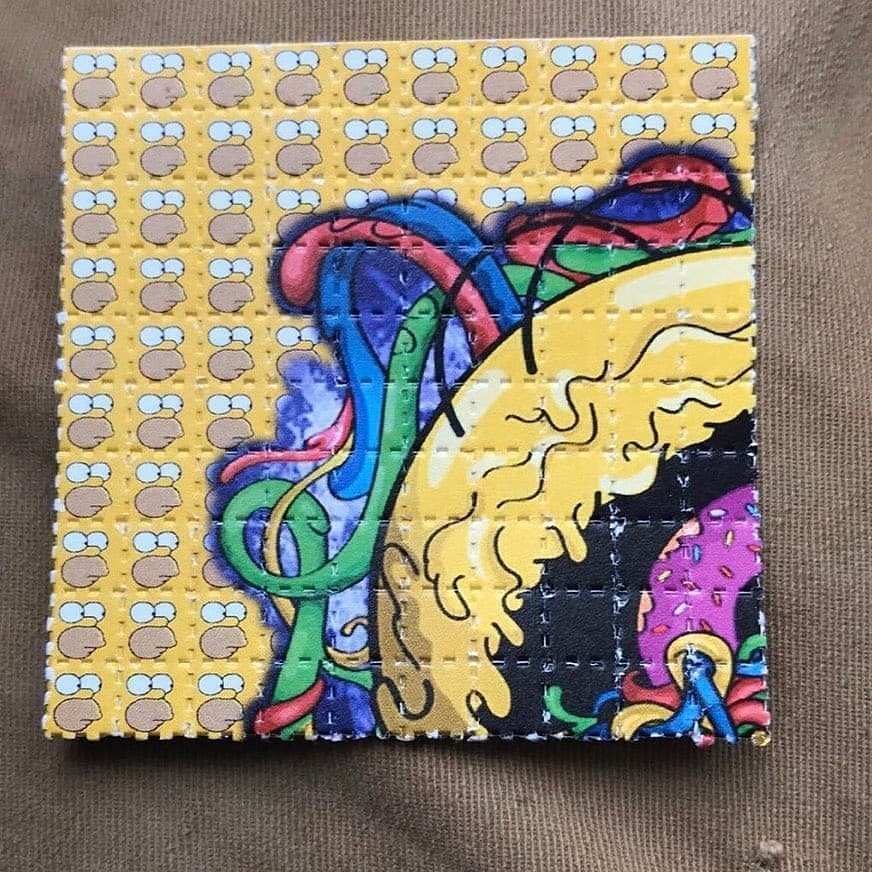
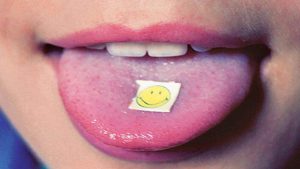

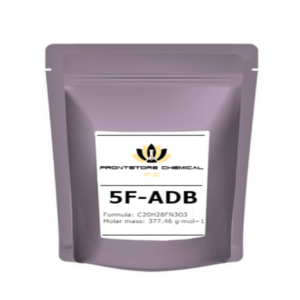
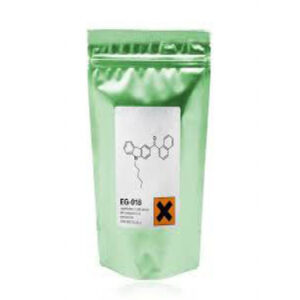

Reviews
There are no reviews yet.